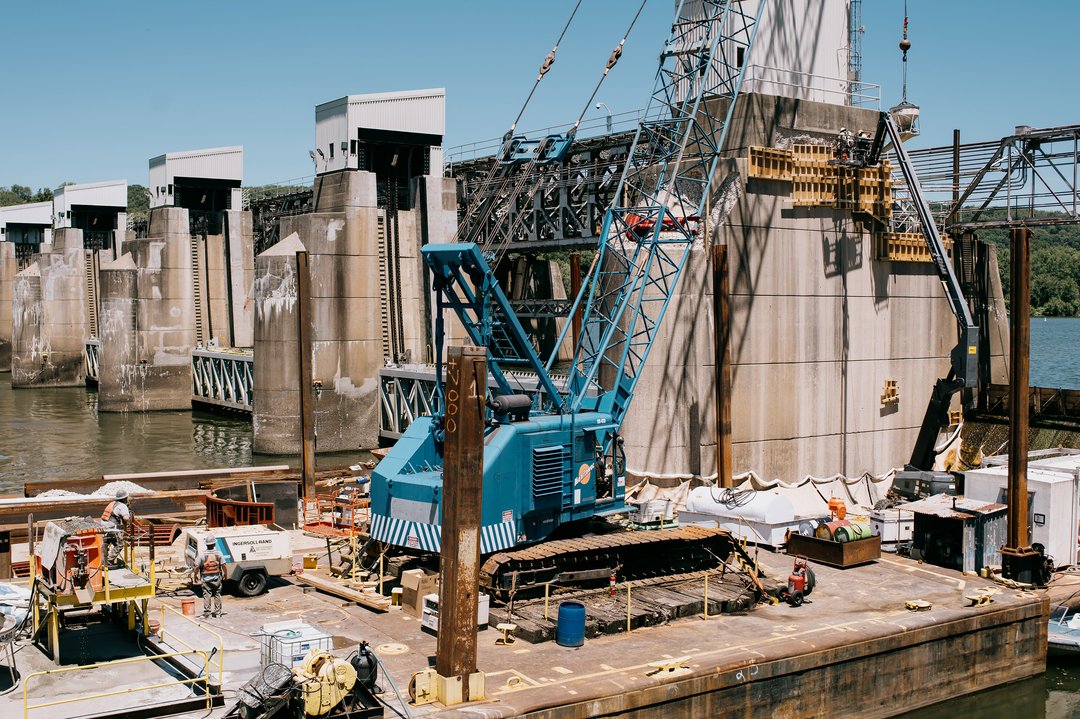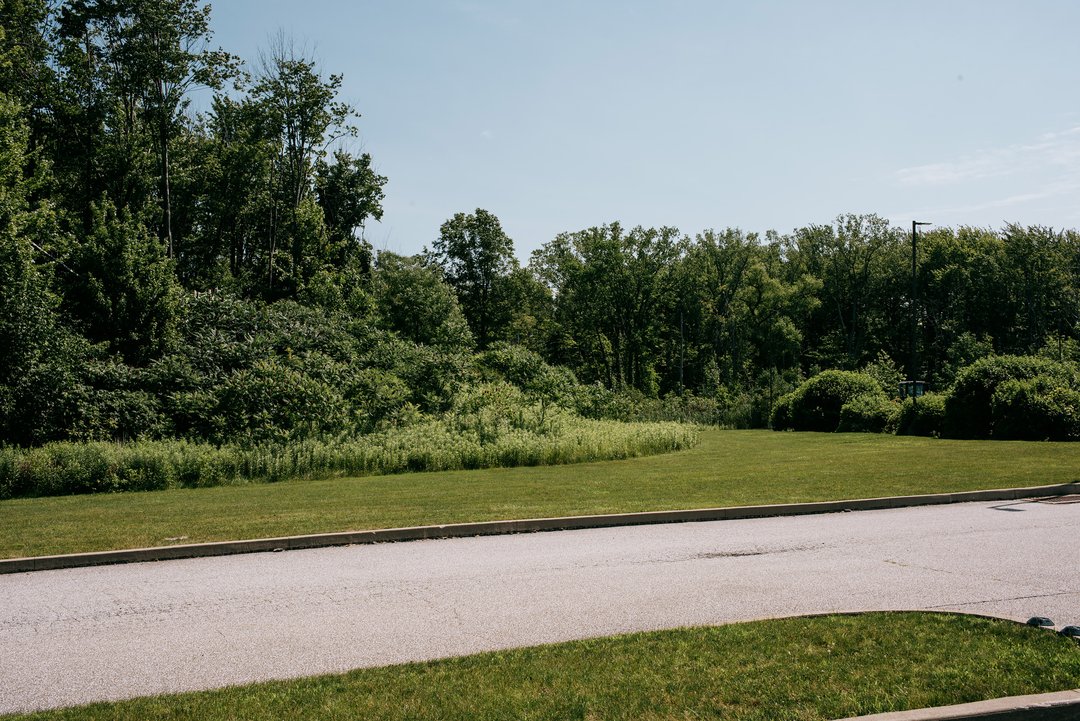Jeanna Smialek
July 25, 2024

A project to modernize the Montgomery Locks and Dam in western Pennsylvania received more than $850 million from the Biden administration’s 2021 infrastructure law. Kristian Thacker for The New York Times
The next couple of years are shaping up to be solid for the U.S. economy. Inflation is returning to normal. As that happens, the Federal Reserve is preparing to cut interest rates. A huge burst of infrastructure spending under the Biden administration has taken time to ramp up, but projects both small and large are likely to break ground in earnest in 2025 and 2026.
Things can always go wrong — the job market could cool more than expected, financial market problems could surface, and risks tied to the election in November could stoke uncertainty — but the base-case outlook is bright. The question now is who will get to take credit for it.
One clear answer: It won’t be the person who shepherded some of the policies that are laying the positive groundwork. President Biden announced on Sunday that he was ending his candidacy for re-election, passing the Democratic baton to Vice President Kamala Harris.
Mr. Biden isn’t entirely responsible for the sunny outlook. White House officials play a relatively minor role in slowing inflation and exert no direct control over interest rates. But big policy packages passed on his watch are helping to fuel a burst in green-energy, manufacturing and infrastructure investment that is expected to continue over the next several years. Expansions of dams and locks will be underway. Dozens of airport upgrades will be completed. Semiconductor factories will begin churning out chips.
It’s a reminder that big and potentially transformative public investments can take time — and multiple political cycles — to play out. It could also be an opportunity for the next resident of the White House to take a victory lap.
Former President Donald J. Trump is already hinting at an optimistic future on the campaign trail. The Republican platform, which he had a heavy hand in shaping, pledged to “destroy inflation” and vowed that interest rates would be lower while declaring that the Republican Party will be one of infrastructure and manufacturing. If economists’ most likely projections come true, those promises should be well within reach.
“It’s a good base-line outlook,” said Julia Coronado, the president and founder of MacroPolicy Perspectives, a research firm.
Most economists agree that inflation is likely to remain cooler over the coming years.
Price increases spiked in 2021 and 2022, and the Fed’s preferred inflation measure peaked at more than 7 percent. That inflation measure has cooled to 2.6 percent, and Fed officials predicted in their June economic projections that it will come down to 2.3 percent by the end of next year and 2 percent — their goal — by the end of 2026.

The future site of the Center for Manufacturing Competitiveness at Penn State Behrend, a project funded in part by the American Rescue Plan. Kristian Thacker for The New York Times
That would mean Fed officials wouldn’t need to hold interest rates quite so high, which they have been doing to in an attempt to bring inflation back under control. Rates are set to 5.3 percent, making it expensive to borrow money, which weighs on demand and makes it tougher for companies to keep increasing prices.
With inflation fading, policymakers expect to cut interest to 4.1 percent by the end of next year and 3.1 percent by the end of 2026. That would still be higher than the rock-bottom rates that prevailed in the 2010s, but it would make taking out a mortgage, or borrowing to expand a business or operate a factory, considerably less costly.
“Whoever becomes president in 2025 is going to inherit a manufacturing economy that has a big upside at a high ceiling,” said Scott N. Paul, the president of the Alliance for American Manufacturing. “Part of that is because the monetary policy environment is likely to be better.”
Perhaps the most visible economic change that could come about over the next couple of years is a wave of new infrastructure.
The Biden administration’s Inflation Reduction Act funded green-energy investment and is expected to cost more than $800 billion through 2033. The CHIPS act included more than $50 billion in financial incentives meant to foster semiconductor research and manufacturing. And a $1 trillion infrastructure law passed in 2021 has been funneling money to big projects like roads, bridges and waterways.
When it comes to transportation spending fueled by the infrastructure law, only about 28 percent of the allocated money has left government coffers, said Adie Tomer, an infrastructure policy expert who is a senior fellow at Brookings Metro, a research unit of the Brookings Institution.
“The next president, whomever it might be, and frankly the next Congress — they will get the bulk of it,” he said.
It is hard to say exactly when money from the various Biden administration packages will have the most impact on the economy, because even centralized trackers run by the government sometimes fail to capture the scope of investment underway. The funding is being parceled out by a variety of agencies and local governments and is often combined with private sources. Construction itself takes time and proceeds in phases.
But Mr. Tomer estimates that infrastructure spending is hovering around peak levels now, and will probably stay there until about 2027 before tapering off.
In short, many projects are in the 2025 and 2026 pipeline — potentially bringing with them positive newspaper headlines and hefty construction hiring.
An empty field in Penn State Behrend’s research park in Erie, Pa., is a clear example of the slow-burn impact of recent policy packages. It is the future site of the university’s Center for Manufacturing Competitiveness, where local metals and battery manufacturers will be able to test new technologies without shutting down their factory lines.
Money from the Biden administration’s American Rescue Plan kicked off the project, and it has since been combined with county dollars, funding from Pennsylvania State University and other grants. School officials expect to break ground in 2025.
A couple of hours south, in Beaver County, Pa., the Montgomery Locks and Dam project received more than $850 million in infrastructure law funding to modernize and improve a critical trade route on the Ohio River.
The project is expected to bring thousands of jobs to the area during construction. While some preparatory work is already underway, construction is expected to start next year on the lock itself — a huge effort that Col. Nicholas Melin, who commands the Pittsburgh District of the Army Corps of Engineers, likens to “building a skyscraper upside down.”
Mr. Tomer thinks that as such projects break ground and eventually offer benefits, it is possible that voters will chalk them up as a legacy of the Biden administration — even with a new president in the White House.
“The faucet turned on, and President Biden was the person in office when that happened,” he said.

Col. Nicholas Melin commands the Army Corps of Engineers district that includes the Montogomery Locks and Dam. Kristian Thacker for The New York Times
The Biden administration has struggled to politically capitalize on the spending that has happened so far. Bridges are being fixed, roads upgraded and airports refurbished, but voters generally take a glum view of Mr. Biden’s economic management in polls and rate Mr. Trump more highly.
But some Democrats are hopeful that Ms. Harris will be able to talk up and benefit from the administration’s policy wins from the campaign trail. And it may become easier for the next White House to capitalize on economic benefits like newly active factories and big construction projects when inflation comes under control.
Yet even with some potential gains in the pipeline, the outlook for the next president is not all sanguine. While the most likely outlook for the economy is a good one, threats that could upend it loom on the horizon.
Some risks are political: If Mr. Trump wins, he has threatened to increase tariffs sharply, which could push up prices, and to curtail immigration, which could spur labor shortages and keep wages rising in a way that causes inflation to linger.
Others are fundamental. The Fed has kept interest rates at the highest level in more than two decades for a full year now, and those high borrowing costs could squeeze the economy in slow motion, weakening the job market that the next president inherits. Already, unemployment is slowly rising.
“There’s still a lot of uncertainty,” Ms. Coronado said.
Madeleine Ngo contributed reporting.
c.2024 The New York Times Company


